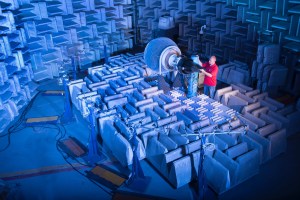The thruster system that will propel NASA’s Gateway around the Moon was recently fired up for the first of many ground tests to ensure the Power and Propulsion Element (PPE) is ready for flight.
NASA, along with Maxar Technologies and Busek Co., successfully completed a test of the 6-kilowatt (kW) solar electric propulsion (SEP) subsystem destined for the PPE. The hot fire tests were funded by NASA’s Space Technology Mission Directorate, which helps foster the development of commercial space capabilities, and included multiple start-ups and shutdowns and other flight-like scenarios to demonstrate the system is ready for the transit to the Moon and extended operations there.
“This is an exciting first step toward proving the PPE’s propulsion system will meet Gateway’s requirements,” said Mike Barrett, Power and Propulsion Element manager at NASA’s Glenn Research Center. “These thrusters will be critical in delivering the first elements of Gateway to lunar orbit and will help us create a dynamic exploration platform over Gateway’s 15-year lifespan.”
This SEP thruster is about 30% more powerful than anything Maxar or Busek have previously flown. Several of these 6-kilowatt thrusters will later be combined with other, higher-power thrusters to complete the PPE’s 50kW electric propulsion system. In total, the PPE will be the most powerful electric propulsion spacecraft ever flown and it will maneuver Gateway around the Moon, opening up more of the lunar surface for exploration than ever before.
A critical part of NASA’s Artemis program, Gateway is an orbiting lunar outpost, providing vital support for a sustainable, long-term human and robotic exploration. The Gateway’s foundational components – the PPE and the Habitation and Logistics Outpost – will be joined together on Earth before launching on a SpaceX Falcon Heavy.
Jimi Russell
NASA’s Glenn Research Center






























